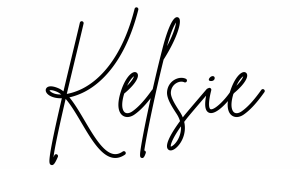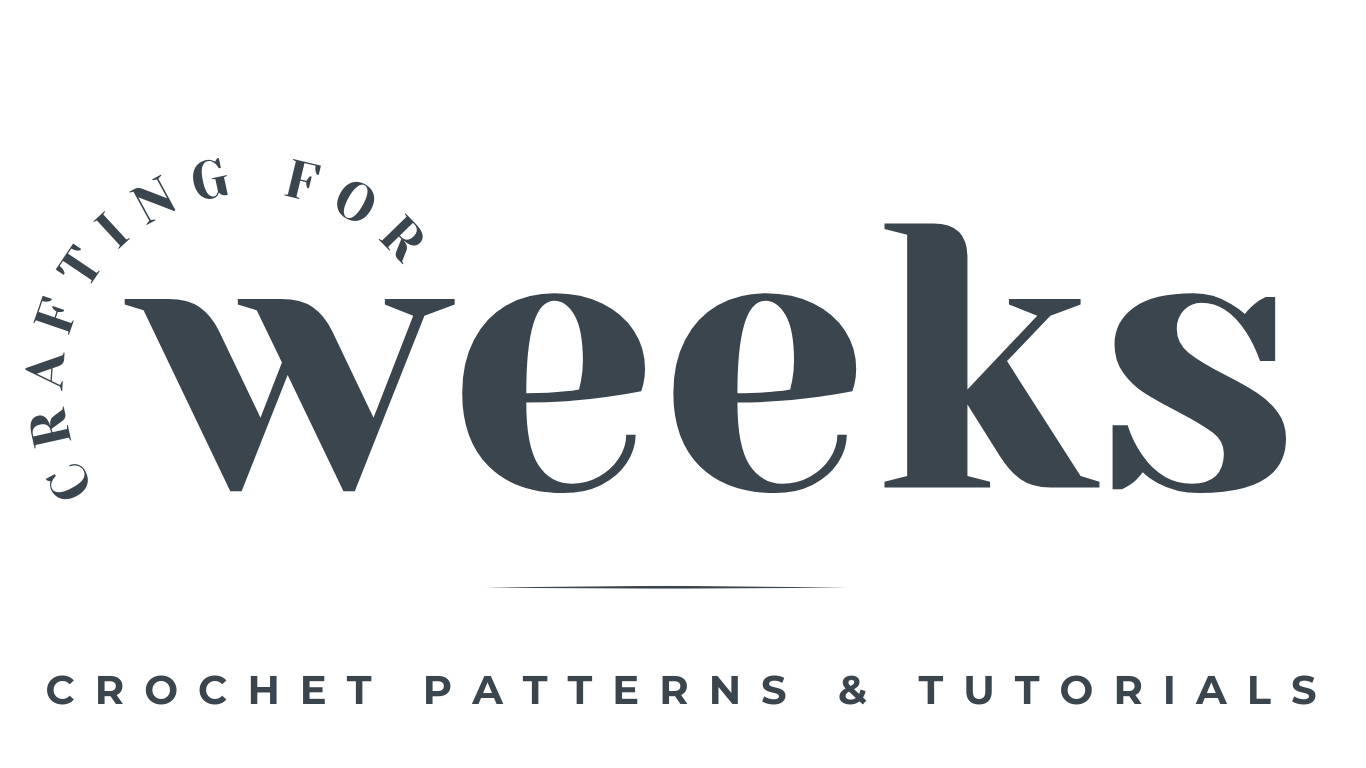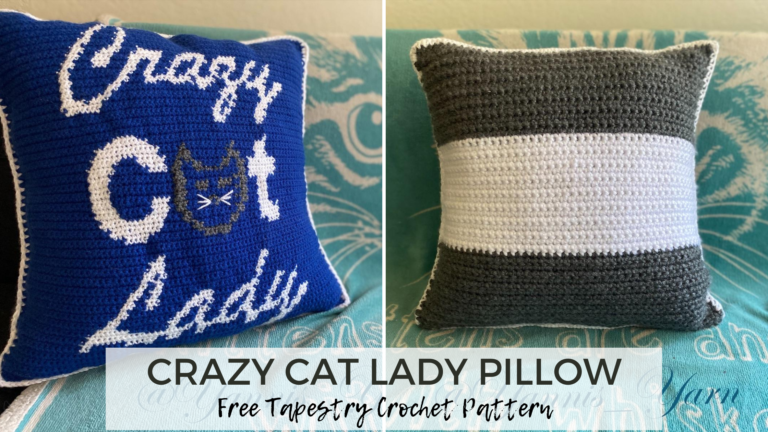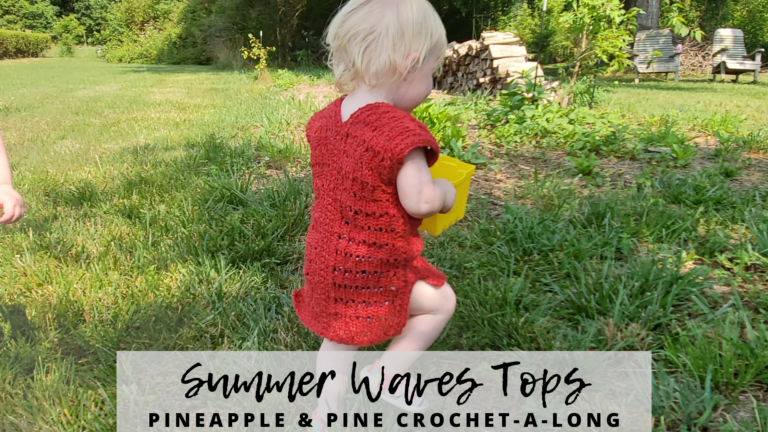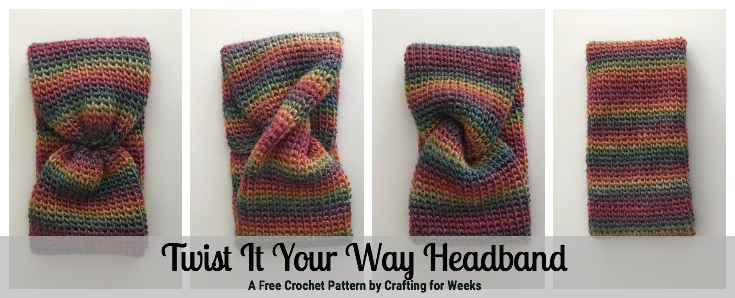How to Crochet Buffalo Plaid
Hello everyone! Today I’m excited to share a technique with you all that’s very popular in crochet…buffalo plaid! This color work technique is really easy to learn and can be used with a variety of different “base” stitches. And you can take the technique and use it where you want, or check it out in one of the first patterns I wrote…The Buffalo Bonnet!

**This site contains affiliate links to products. I may receive a commission for purchases made through these links. This is a great way to support my small business AND get the supplies you need for your project!**
About the Buffalo Bonnet
The Buffalo Bonnet is a simple pixie-style bonnet for babies and kids. It’s made using the buffalo plaid stitch technique covered below and designed it for Newborn up to age 10. But I suppose if you were just dying for an adult size, it would be easy enough to adapt.
Check out the free Buffalo Bonnet Pattern on the blog, or if you would prefer an ad-free, printable version, check out my Ravelry or Etsy shop for the inexpensive PDF.
About Buffalo Plaid
I know what you’re thinking…Buffalo plaid is for fall and winter. But I think that depends largely on your color palette. The traditional color scheme of red, black and maroon is definitely giving more fall vibes, but you can easily take this stitch technique into spring/summer by leaning into lighter colors more common in gingham prints.
So the first big secret to making a great buffalo plaid is to use 3 colors of yarn. Your first color should be a neutral like black, white or cream. Your other two colors should be similar colors, but different shades. For example, for a traditional red toned plaid, I’d want to use a true red and a maroon. For a pink “plaid”, I would choose a light pink and a darker pink. The possibilities are pretty endless with color combos.

Techniques You Need to Know
Changing Colors
Okay, so to make a really great buffalo plaid, you will need to know how to change colors with your yarn. The technique is actually really simple. Before you pull through your last part of the stitch, you will switch colors. So in this case, my last “yarn over” in this double crochet will be with a new color. I will yarn over and pull my new color through the last two loops of my double crochet.

Carrying Yarn
The next technique you need to know is how to carry your yarn. To do this, I simply hold the yarn I’m not using along the back back stitches to be worked. Then as I work my stitches with the color that I am using, I will wrap those stitches around the unused color. You may seek little bits of your unused color peek through your stitches here and there, but ultimately it won’t take away from the effect you’re going for. Below you can see how I’m holding the color next to the stitches I’m crochet into. Whenever I insert my hook into the next stitch, it will also go under the carried yarn strand.

For this particular project, I carried my Color A (the darker shade, maroon) throughout the entire work. Color B (the lighter shade, red) and Color C (the neutral color, black), I cut at the end of each row. When finished I tied loose ends together and wove them along the back of my work. How far you want to carry your strands is totally up to you. You can carry colors throughout your work or cut after each row do a little extra weaving.

Experimenting with Stitches
One fun thing about doing buffalo plaid in crochet is that there is no specific stitch for it. Meaning you can use single crochet, double crochet, half double crochet, or whatever else is your favorite. I’ve even played Linked Double Crochet for this type of colorwork.
The trick to getting the effect you want is to match your stitch width to your stitch height so you end up with even squares for your color work. For example, if I want to do four single crochets across for each color block, I need to do measure how wide those four stitches are. Then I will take that measurement and do enough rows to reach that measurement (generally 3-4 rows for me, but do a swatch to see for you!) before I change my color for the next block.

These numbers will vary based on the stitch you choose and the size of blocks you want. Double crochet stitches tend to be taller so they will need less row repeats than single crochets. Be sure that whatever stitch you choose to work with, you start with a gauge swatch so you can get your color block proportions just right!
Special Stitches for the Bonnet
Now, since we’re here, let’s go over a few special stitch for the Buffalo Bonnet. Depending on your skill level, Front Post Double Crochet and Back Post Double Crochet may or may not be a special stitch. But for the true newbie, don’t be afraid! These stitches are actually quite simple and they form a great ribbed effect.
For Front Post Double Crochet (FPDC), or any front post stitch for that matter, its simply a matter of where you insert your hook. Normally you would insert a hook into the top of a stitch, but for this you will actually be paying attention the the body of the stitch itself. So you will yarn over and insert your hook behind the body, or the post, of the stitch from the previous row. You will be working in the front side of your work to do this. Then just finish your double crochet stitch like normal. Doing this will pull your stitch forward.

For Back Post Double Crochet (BPDC), the concept is very similar. The only difference is that you will be working along the back side of your work. So you will yarn over and insert your hook in front of the body, or the post, of the stitch from the previous row. Then you will finish your stitch. Doing it this way will pull your stitch backwards.

Final Thoughts
I hope you all enjoy this tutorial. Whether you decide to make your Buffalo Bonnet now, or use this stitch technique to create your own crochet creation, be sure to tag me on Instagram @craftingforweeks so I can see your great work. Until next time…
Happy Crafting,
